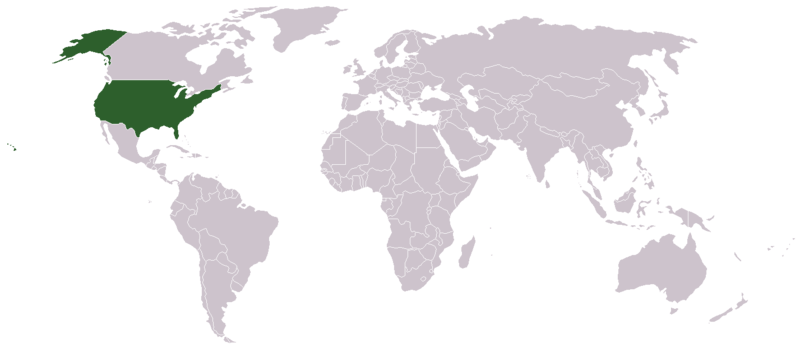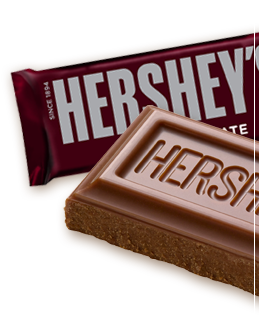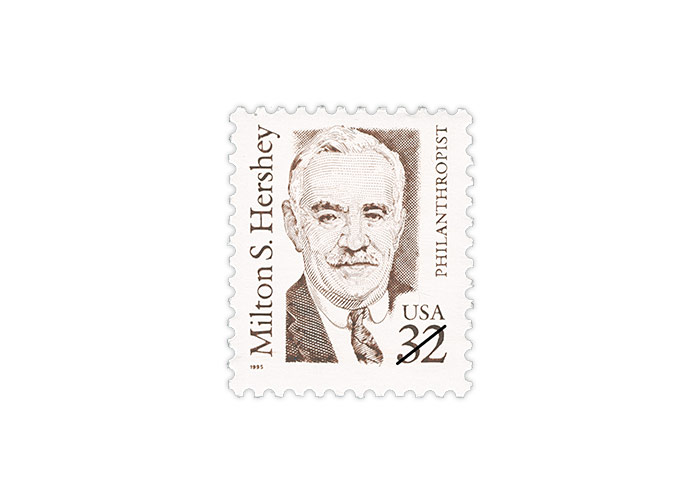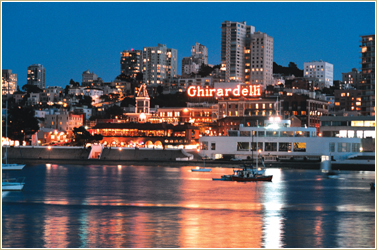Chocolate, Part III
Chocolate in America
While the East and Far East had supplied Europe with exotic spices and delicacies for millennia before the age of exploration, it was to be the Americas to grace the world with the gift of chocolate. “Curiously, this public airing of ideas in chocolate houses, so typical of the English Enlightenment, was never transferred to the North American Colonies. The leisured classes in Virginia took their chocolate at home” (Bardi, & Pietersen, p. 26). It was destined that Americans would like love chocolate, but not that they would mix it with politics—well, at least not directly.
Whether it was part of war rations, diplomatic efforts or even provisions for space travel, chocolate is an American essential that one could even call patriotic!
Even before they declared their independence from England, the American colonists were making chocolate. Chocolate was considered a staple, and it was made in America. The colonists imported only the raw materials, cocoa beans, from the West Indies. . . . After the Townshend Acts of 1767 levied taxes on shipments of tea, drinking chocolate became patriotic. (National Confectioners Association [NCA] Chocolate Council, para. 1&2)

The history of chocolate in America precedes the term “America” itself; the nation was still loose colonies, not all of which were English either. Since the Spanish were the first ones to taste of the sublime treat as part of their conquests, they would also be the first ones to import it into America.
The oldest reference to chocolate in North America is from a Spanish ship which arrived in St. Augustine, Florida, with crates of chocolate in 1641. By 1670, European chocolate was being sold in public houses in Boston. By 1682, cocoa was being exported from Jamaica to Boston to supply the first chocolate makers in the American colonies. Drinking chocolate was affordable to all classes of people in North America and was available in most coffee houses (Snyder, para. 3).

Even before the beginning, chocolate in America was here to stay. While the above quote uses the term, “classes,” this term is not one from our shores. Chocolate was made affordable to everyone by something generations of Americans had perfected, the industrial process. It was Dr. James Baker and an Irish immigrant named John Hannon who opened America’s first chocolate factory in 1765 in Massachusetts (NCA Chocolate Council, para. 1). The oldest running factory in the United States today that is still in operation producing chocolate from 1852 is of course, Ghirardelli. The history of the company is summed up nicely on their website:
During the California Gold rush in the mid-1800s, Domingo Ghirardelli shrewdly discovered that the exhausted miners in from the fields were starved for luxuries and needed something to spend their gold dust on. To capitalize on this opportunity, he stocked chocolate delicacies to ensure that they solicited his shop (Ghirardelli Chocolate Company, 2012).
However the biggest name in American chocolate known the world over is the ambitious son of Swiss Mennonite immigrants, Milton Snavely Hershey. Hershey started off life with a less than intact home and a largely absent father. After a failed apprenticeship with a printer, his mother directed him to an established Pennsylvanian confectioner. It was during this apprenticeship that Hershey’s true talents became known. Hershey would start several business ventures, some of which failed. He finally succeeded in his next to last one—not as a chocolatier but in making caramels. He discovered the use of milk and developed a process to make a superior caramel using milk instead of lesser quality ingredients.
Hershey’s perseverance paid off. He saw that his milk caramels were affordable and thus widely accepted; in his heart he knew that he could do the same with chocolate. In 1893 he visited the Columbian Exposition in Chicago and saw in the “Machinery Hall” the cutting edge of industrial machinery for producing all kinds of things. Among the vendors was the J.M. Lehmann Company of Dresden, Germany who was showcasing their new chocolate making machines. Milton Hershey purchased a machine and shipped it to Lancaster, PA. That is where he experimented with chocolate (mostly as coating) for his already successful caramel line (McMahon, p. 38).
Click Here to watch how Hershey Chocolate is made
“To most Americans, the name Hershey is probably synonymous with chocolate, and some people might assume that the candy takes its name from the town of Hershey, Pennsylvania, rather than the other way around” (Teubner, p. 19). It was there in Lancaster, PA that he discovered that he could indeed make the milk chocolate product more affordable by mass production and by running a well managed, people-centered company—even insisting on a one story floor plan for his new factory because of the ability to easily egress in case of a fire.
Milton Hershey eventually sold his caramel company for $1,000,000 and set out to relocate his new enterprise of producing chocolate. Since it was his Swiss ancestors who had successfully married chemistry, chocolate and milk, Hershey knew that he would need to be in a location with a plentiful milk supply and an adequate labor force. It was his ambition to produce a smaller product line in sufficient quantity, lowering the per-unit cost as volume increased—thus making milk chocolate affordable. While I am grateful for Mr. Hershey’s chocolate manufacturing prowess, the people who would live in the model town he was building would be grateful for his foresight and design implementations.
“Hershey, the Chocolate Town,” the dimensions of which made Cadbury and Rowntree’s achievements pale into matchbox scale by comparison. The several thousand employees would count on schools, libraries, churches, a hospital, a fire department, a park, a zoo, a golf course and other amenities. Moreover, alongside the milk chocolate and cocoa factories there were 8000 [sic] acres (3237 hectares) of Hershey-owned dairy farms (Bardi, & Pietersen, p. 30).
European chocolate at the time was typically bolder in flavor because its flavor profile consisted of a stronger cocoa butter flavor due to the higher content. However, Hershey was not a chemist and he found that what worked for carmels also worked for chocolate—milk chocolate that is. The creamy milk replaced the fat content of the cocoa butter while adding a slightly sour complexion. Since cocoa butter has a melting temperature similar to the temperature of the human hand, the new milk chocolate had a better solid composition.
Even with a new factory, the more growth came to meet the demand for chocolate. The price of sugar soared during WWI as the country rationed its European (beet) sugar supply. Hershey eventually bought a Cuban (cane) sugar plantation only to have the bottom of the sugar market fall out after the war. Still he persevered through, and even with the sugar market volatility and Prohibition turning beer companies into candy companies, Hershey realized that America was loyal to his brand of chocolate no matter what.

It might have been the instability of Milton Hershey’s upbringing, but some sources say that it was Kitty Hershey’s idea (Milton’s wife who was barren); in either case Milton Hershey would go on to establish the Milton Hershey School “to provide the boys with a stable home life, a sound education, and a trade . . . . From its beginnings, the school was designed to provide a homelike environment for the boys. They were grouped by age . . . [and] meals were served ‘family style.’” (McMahon, p. 116-117).
In 1918, three years after the death of his wife, Milton Hershey placed the bulk of his fortune, $60 million worth of Hershey Chocolate Company stock, in trust for his school. The School Trust was and still is managed by the Hershey Trust Company, which . . . . ensures the School’s continued ability to provide a full education and a secure, nurturing environment for all attending students. Only income and dividends from the School Trust’s investments may be used for the benefit of the school. During the 1920s, the school added an agricultural program to its curriculum. Older boys lived in homes connected to farms where they raised turkeys, pigs, ducks and cows (McMahon, p. 117).
The Hershey Chocolate Company would have other trouble with the depression, WWII, the restructuring of the company and eventually the death of Milton Hershey himself—the indelible mark of what chocolate would mean to America is certain to include a Hershey embossment.

The history of chocolate in America is indeed a sweet one. With a big “thank you” going out to many entrepreneurs, chemists and adventurers throughout world hisotry who helped advance the discovery of chocolate.
Wilson
Pro Deo et Patria
Photo Credits:
Chocolate in America (World Map with US highlighted in green) by Cleavlander added to the Public Domain
Hot Chocolate Heart by Kevin Tuck and can be found at: http://www.rgbstock.com/photo/muJqBly/Hot+chocolate+heart
Ghirardelli (Factory) by Ghirardelli Chocolate Company taken from http://www.ghirardelli.com/about-ghirardelli
Hershey Chocolate by Hershey Chocolate Company taken from https://www.thehersheycompany.com/contact-us.aspx
Hershey (Hershey-Great-Americans-Series) by USPS taken from http://www.beyondtheperf.com/sites/default/files/slideshow/images/Hershey-Great-Americans-Series.jpg
Works Cited:
Bardi. , & Pietersen, (2006). The golden book of chocolate. (p. 26). Florence: McRae Books.
Ghirardelli Chocolate Company and Parrot. (2012). About ghirardelli. Retrieved from http://www.ghirardelli.com/about-ghirardelli
McMahon Jr., J. (1998). Built on chocolate: The story of the hershey chocolate company. (p. 38). Los Angeles: General Publishing Group.
Snyder, R. (2010, August). Chocolate as america. Retrieved from http://blog.constitutioncenter.org/2011/08/chocolate-as-america/
Teubner, C. (1997). The chocolate bible. (p. 10). New York: Penguin Studio.
The National Confectioners Association Chocolate Council. (2010, December 23). The story of chocolate, Americans.. Retrieved from http://www.thestoryofchocolate.com
Proviso:
Nothing in this blog constitutes medical advice. You should consult your own physician before making any dietary changes. Statements in this blog may or may not be congruent with current USDA or FDA guidance.

